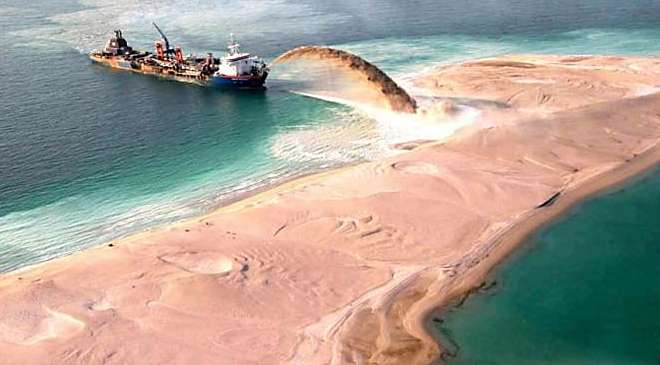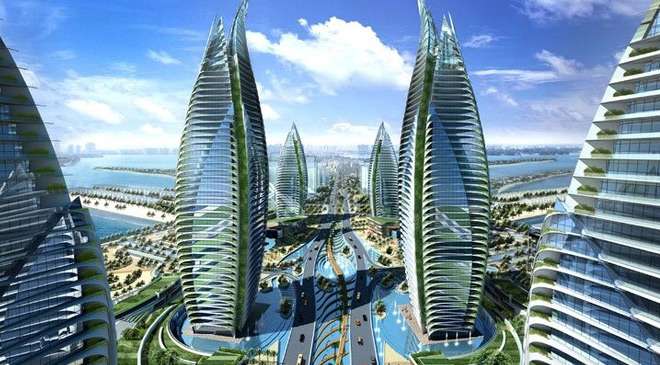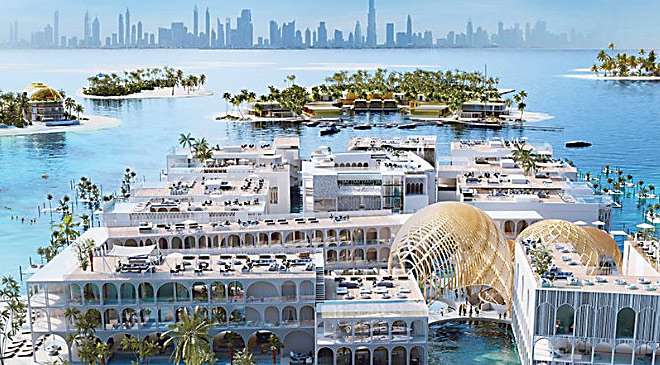The Palm Islands in Dubai are the three man-made islands that have been developed by Nakheel Properties (they are one of the most famous property developers of Dubai) on the shores of Dubai. The construction of the palm islands involves a great deal of methodical planning and several hours of feasibility studies by the developers to ensure that the environment does not get disrupted due to the Dubai Island construction project.
Dubai Island construction was a huge project and was carried out in several different phases, so that the work progressed methodically and systematically. The first stage in the entire developmental process constituted the laying of foundation for land. This stage involved huge amount of sand mining and rock mining, coupled with the transfer of the mined sand and rocky matter to the project site. As per the plan, the next phase will be the development of infrastructure. This would be followed by several other stages, including the important task of linking the islands with other parts. This was done by building many bridges that would help in linking the different parts of the island. Once this is done, the next stage will involve residential construction, wherein the developers will start with the construction of homes, apartments, and townhouses.
It is not easy to construct eco-friendly artificial islands, especially when we are aware of the wide range of environmental impacts that can be triggered off due to a developmental project of this nature. Dubai Island construction project involved several years of planning and development. Modern techniques were involved, which were carried out by using huge imported machinery. A new technique was also implemented during the island construction phase, which is known as “rain bowing”. In this technique, dredging ships were used to spray sand in the project site area. The process was called “rainbowing” because when the sand was sprayed, it resembled arcs in the air. The breakwater, which was created in one of the islands, has several million tons of rock. Cranes were used to place these rocks individually at the appropriate places as per the designs made by the developers.
In the year 2002, the famous developers Jan De Nul Group commenced their work in one of the islands – Palm Jebel Ali. The work involved the creation of a long peninsula that was almost four kilometers long. There was a 200 meters wide protection for the island and a 17 km long breakwater. In order to create all this, huge quantity of rock was required. Almost 210,000,000 m3 of rock along with limestone was reclaimed in the area. Thus in Dubai Island construction project, more than 10,000,000 m3 of rocks was used in the work that involved protection of slopes. This gave a new look to the islands and helped in the protection of the completed work.
By the end of October 2007, nearly 20% of the land reclamation work was completed in the largest island Palm Deira. In this particular Dubai Island construction project, more than 200 million cubic meters of sand was used. In the later part, more than 300 millions cubic meters of land was reclaimed. Since land-reclamation was done in phases, the planning and development was carried on slowly. However, very recently development and construction in Palm Diera was stopped, due to the current global financial crisis. The construction is however, expected to resume as soon as the signs of the recession get faded.



